The Story Within A Story In NieR: Automata’s Difficult Tutorial
Tutorials are meant to show players the game's fundamental mechanics and systems. NieR: Automata does the opposite... sort of, but for a good, storytelling, reason.
Everything that lives is designed to end. We are perpetually trapped in a never ending spiral of life and death. Is this a curse? Or some kind of punishment? I often think about the god who blessed us with this cryptic puzzle… and wonder if we’ll ever get the chance to kill him. - 2B
The thought-provoking questions and puzzling speculation about life repeated, over and over, through in-game deaths beautifully set the themes and tone of PlatinumGames’s NieR: Automata. 2B’s monologue, the game’s thematic foundation, stimulates philosophy, self-evaluation, and transcendence, conveyed as on-the-nose for players to grasp and never let go.
What does it mean to live and die? Believe it or not, NieR: Automata’s tutorial implicitly answers these questions, projecting thematic beats through dialogue, symbolism, and mechanics.
What is NieR: Automata?
NieR: Automata is an Action Role-Playing Game released for Xbox One, PlayStation 4, Nintendo Switch, and PC. It was developed by PlatinumGames and published by Square Enix, led by Yoko Taro. NieR: Automata is the second installment in the series, released in 2017, while the first, NieR, was released in 2010. The original NieR was then remade as NieR: Replicant ver.1.22474487139… in 2021 by Toylogic.
NieR: Automata follows the story of 2B, a member of the android military force YoRHa. Invaders from another world attack without warning, unleashing a new threat called the “machine lifeforms.” We learn that mankind was driven from Earth and takes refuge on the Moon, using YoRHa to fight against the alien race.
If you’re new to or familiar with NieR: Automata, this article will only discuss the tutorial. It will explore the meaning behind each sequence and gameplay encounter through the lens of narrative design and, of course, answer the question…
Why is the tutorial so hard? The short answer is: storytelling and thematic drive. The long answer is divided into three parts, taking apart each of the tutorial’s sequences and presenting its interpretations for you to analyze… Or, hopefully, motivate you to play this game and view its narrative with a different mindset.
PART 1: Everything That Lives Is Designed To End
“Captain, I think…”
Whiteness. Fade out to an in-engine cinematic of 2B and a squad of YoRHa flight units, soaring below the stratosphere on auto-pilot. Operator 6O provides a quick debrief of the mission: fight through the machine’s anti-air defenses, destroy the Goliath-class unit, and gather any data they can.
We immediately lose a squad member, 12H, from a powerful laser beam. 2B commands the squad to activate manual firing mode to engage the enemy—our first system and sequence to showcase ludonarrative harmony. It is also the beginning of a fast-falling turmoil.
The opening gameplay sequence of NieR: Automata showcases all the basic gameplay actions and perspectives that the game will offer: top-down, third-person, and side-scrolling shooting, slashing, and dashing. It uses the game’s characters and environments to convey narrative reasons for each transition and mechanic, from narrow spaces to new enemy types. As you learn each mechanic, you lose squad members; 11B, 7E, 1D, and, finally, 4B.
The minimalist design approach of tutorialization is a conscious choice that leads to uncertainty and the unsophistication of NieR’s world. It naturally develops into a progressive learning pattern of experimentation, which can hinder the player’s experience, but deepens the connection with the game’s unique thematic approach. The latter is the clear focus and pillar, a constant in each mechanic and system.
Why present a squad where only 2B is the sole survivor? Foreshadowing. A miscalculation of confidence and a lack of information led to unnecessary destruction. Hope is no longer in the player’s purview. They must rely solely on skill, knowledge, and consistency, which for new players might be daunting because of the tutorial’s challenging, unexpected encounters, and lack of gameplay direction.
Through death, we relive the same experience, listening to 2B’s monologue on life and seeing the destruction of YoRHa and the machines. Through foreshadowing, we ask: Is this YoRHa’s fate? Does the game want me to succeed or fail? The deaths of the squad members highlight the inevitability of death, signifying our destined failure—"Everything that lives is designed to end."
With repetition, we learn from our mistakes and overcome what may seem a hopeless and lonely impossibility. However, with every failure, we strive for answers. Why is this difficult? Why are we doing this again? You’ve succeeded! NieR's focus is not on looking for answers; it’s on asking the right questions.
Whatever your reason for completing the tutorial—bragging rights, curiosity, or accomplishment—you’ve passed NieR’s test. However, to continue to move forward, you must ask yourself: Are you determined to achieve what you’re striving for?
We charge through the machine’s factory and travel deeper to the location of the Goliath-class unit, alone. Yet, another impossibility shows itself: a giant bandsaw, a boss battle.
Part 2: Deus Ex Machina
“Better make sure he’s actually dead next time.”
An in-engine cinematic welcomes 2B, crashing into the machine’s factory with style, showcasing YoRHa’s peculiar uniform, weapons of choice, a large white sword and a Katana, and her floating pod, which also acts as a machine gun. Gameplay begins, where players learn the mechanics of slashing, shooting, and dodging in third-person view.
NieR continues to double down on failure and repetition, introducing a boss battle right after the brief encounter against a group of bipedal machines. A giant bandsaw destroys open a wall, inviting the player to engage while large UI text appears, “Warning.” Operator 6O makes a return, informing 2B of an in-progress pod program being uploaded for immediate use. We see a progress bar appear above 2B’s pod, solidifying, and continuing, the ludonarrative harmony and extending it to educate players about pod programs.
To succeed in this boss battle, players must fully grasp the fundamentals of combat, including shooting, pod programs, and dodging. Only with experimentation, or a quick search in Google, can players learn that consistently dodging avoids major damage. This can discourage a lot of players. However, if you have embraced the consequences presented by the game's themes and answered “yes” to our last question, this won't be seen as an obstacle but as a challenge for enlightenment.
When 90% of its health is depleted, an in-engine cinematic begins, showing rockets from an unidentified flight unit destroying the giant bandsaw—a deus ex machina, “god” from the machine. 9S, the unknown android and savior, swoop in unexpectedly, restoring hope and supporting the mission.
“Better make sure he’s actually dead,” 9S says, making his debut in the narrative.
This may allude to the “god” that 2B was referring to during her monologue, hinting that this “god” may not be what we think it is. Hence, 9S requests confirmation if this bandsaw was the target, which we learn it is not. This subtle foreshadowing raises questions: Is 9S not what he seems? Is it referring to another character, an antagonist? Is “god” manifested in some other way?
We finally arrive at our moment's respite, a series of encounters and ludonarrative sequences that teach players new systems and mechanics like the lock-on, mini-map, item pickups, and different perspectives.
The purpose of this section is three-fold: teach players additional mechanics and systems, establish an intimate connection between 9S and 2B, and expand the player’s horizon of worldbuilding.
Another key thematic and narrative pillar of NieR is humanism and empathy. Our first hint arose from 2B’s uniform: an android in a dress with high heels unsuitable for combat. Why? It establishes a connection to humanness, a parody of mankind, which leads to 9S…
“You know, ma’am, I’m glad you’re here,” he says to 2B.
“Emotions are prohibited. And another thing… Stop calling me ‘ma’am’. It’s unnecessary.”
This is our first human interaction within NieR. 9S surrenders and exposes his feelings towards loneliness and an interest in our protagonist. We receive, somewhat, of a similar sentiment from 2B. She’s a combat android, strict in rules, and always following orders, but she understands empathy and hopes to develop the relationship further… in her way.
9S reassures 2B of his presence, providing information relating to the mission. She spikes intrigue about the factory and 9S responds.
“I guess humans used to use it as a weapons factory. But now it’s crawling with machines. The enemy seems to have repurposed the facility to increase their overall machine production.”
The player now associates machines with weapons—methods of mass destruction. What about YoRHa? Are they not machines as well capable of destruction? This worldbuilding detail opens a new realm of philosophical themes that can only be appreciated by further playing the game. It’s a taste of what’s after the tutorial.
2B completely surveys the factory, finding no sign of the target. Once outside again, she notices a flock of birds flying upward, stupefied. 9S, once again, reassures her of his presence.
“You mean the birds? Yeah, there’s more plants and animals here than there used to be. Probably because the environment’s changed.”
This scene implicitly confirms NieR’s time and setting: a war-torn, apocalyptic world devoid of humans, and overrun by machines and androids. However, the birds also symbolize hope and freedom, exaggerated by the subtle camera focus and ease-in. It showcases a dire world where humans, or maybe machines, have a light to follow, and a chance to survive.
Conscious beings can make their actions meaningful with the help of others—the flock. Whether it’s love or wanting to exist, we have meaning for ourselves and others, which is enough to survive. Without a flock, our meaning can distort reality, contradicting our virtue with apathy.
Part 3: The Black Box
“Kill… Kill… Kill…”
Two giant bandsaws appear, sliding on large rails in a long metal bridge. We see the familiar “Warning” UI text appear, welcoming players to once again engage and defeat not one, but two giant bandsaws. This is the point where many players fail and quit the game. Understandably so…
This is also where NieR sets itself apart from other Action RPGs, taking risks and following game design choices that support the artistry and philosophy. It’s the exact moment that put me in awe, laughing uncontrollably after listening to 2B’s monologue again and realizing the vision. I was determined to learn more about its underlying message.
After defeating the giant bandsaws, 2B finally reaches the target, confirmed by her pod. A ten-story tall machine with arms like bandsaws and its body, like a small factory, emerges underwater. It leaps towards 2B and seamlessly transitions to gameplay, readying the player for the next boss battle.
The following sequence expands to several encounters and cinematics, reintroducing 9S to the fray and supporting 2B. We won’t go into every detail of this segment.
The focus is, however, the narrative and character development between 2B, 9S, and the machines. Let’s fast forward and explore the scene where 9S saves 2B from a bandsaw attack.
“Boost!” 9S shouts as he thrusts towards the bandsaw, deflecting the attack. He recovers and immediately gets counter-attacked by the Goliath’s second bandsaw. “9S!” 2B yells from desperation. 9S falls out of his flight unit and lands on the Goliath machine. Because of the damage taken by the rockets previously, the machine shuts down, giving 2B, and the player, a chance to climb the Goliath and save 9S.
This is 2B’s first emotional reaction towards another android, showing empathy and distress. She broke the code. She gave in to anxiety and pushed herself to survive, to save 9S. While climbing and combating small bipedal machines, she attempts to message YoRHa for support, but to no avail. 2B continues to tell herself that she needs to help 9S.
When 2B reaches 9S’s dismembered body, she immediately tells her pod to get “staunching gel” and “logic-virus vaccines.” Her pod denies the request, saying that “it’s inadvisable” and “the subject’s vital signs are too poor.” 2B lashes out and tells her pod to “Shut up!” and “Do what I say!”
9S also attempts to sway 2B into leaving him behind, saving herself from death and destruction. Why are these androids, machines, acting this way? What benefit would they have to sacrifice themselves for others? We’ve reached our thematic climax, the essence of NieR’s narrative, the reason for staying present in this never ending spiral. Our last pillar, showcased in the tutorial, is human emotion.
Human emotions drive reason, incomprehensibility, and detachment. If we’re in rage, what reason do we have to become in rage? Are we detached from the flock? If so, do we care about others or only about ourselves? We see both ends of the spectrum from the androids and machines—empathy and apathy, joy and sadness, passion and fury. The Goliath machine shows rampage and indifference by saying the words “kill” repeatedly, attempting to destroy 2B. This also foreshadows the game’s antagonist, preparing players against an emotionally blind machine that only wants death.
Another foreshadowing is our next combat sequence against the Goliath machine. 9S successfully hacks the machine’s network, taking control of one of its arms for 2B to use. This provides a spectacular gameplay sequence, reintroducing all basic mechanics while using the machine’s arm as a weapon. It also showcases an underlying meaning of machines destroying machines, a narrative confirmation that appears at the end of NieR.
These questions of who’s destroying who and why come together in a tight self-contained tutorialized narrative, unexpressed with mechanics, dialogue, and symbolism, to convey the complete story of NieR: Automata. It tells us implicitly; that the game is played multiple times, dying and reviving. It tells us about philosophical themes of life, death, and humanism. It presents us with questions of who’s “god”? Are we able to stop it? Stop what, exactly?
After defeating the Goliath machine, 2B and 9S have one last moment together, savoring their existence. However, three more Goliath machines appear and cut their time short. 9S suggests using their black boxes, self-destructing themselves to destroy all life and machines nearby.
“2B… It was an honor to fight with you, truly.”
“The honor was mine.”
To eloquently end this tutorial, we have 2B and 9S tapping each other’s black boxes, causing a destructive reaction that soon fades to white, assimilating the start of the tutorial. Yet, we fade out to black, inside a space station, looking out—the end.
If we continue to follow the foreshadowing trail, can we assume that the end of NieR: Automata is nothing but… nothingness, a black void, emptiness? Or the start of something new?
Have you played NieR: Automata before? Did you enjoy the game? What was your experience like playing the tutorial?
Conclusion
Is NieR: Automata’s tutorial hard? For some, yes. It lacks direction and explanation of systems. These unexplained systems, however, have been available to use since the beginning of the tutorial. One of which is the Restorative Items. Players start with fifteen Small Recovery items, which can be consumed by clicking the Down D-Pad button for PlayStation and Xbox consoles.
Another system is dodging, in which you can tap repeatedly and gain invincibility frames almost infinitely. You can also press and hold to sprint, which gives you a speed boost if held in one direction.
Is it necessary to explain these systems? If the team had specific goals and pillars they wanted to follow to convey a message, then no, it’s unnecessary. Games are more than just mindlessly having fun. It’s an art form. NieR: Automata does an exceptional job in meeting halfway in balancing fun, tutorialization, and storytelling. NieR’s tutorial is not just about teaching mechanics and systems, it’s about teaching the themes and narrative while using these mechanics and systems.
It may not be for every gamer, and Creative Director, Yoko Taro’s response to that is… “That’s ok.” NieR: Automata is a sequel to the original NieR, catering to fans of that franchise and fans who love video game storytelling with impact and emotional drive. It’s a celebration of the medium, and Yoko Taro and his team reassure fans that NieR: Automata is a small game with a big impact, which, safe to say, they succeeded.



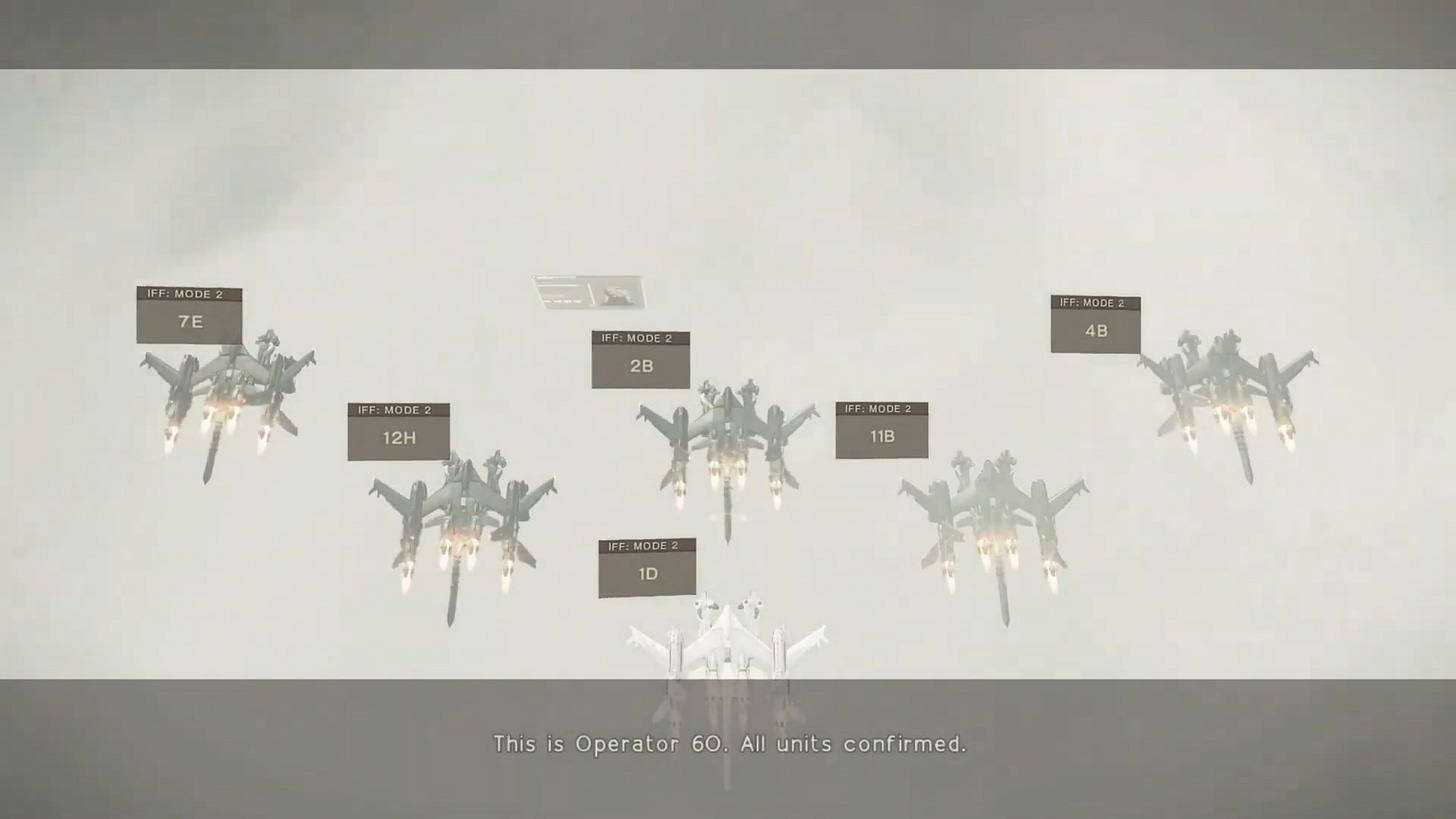
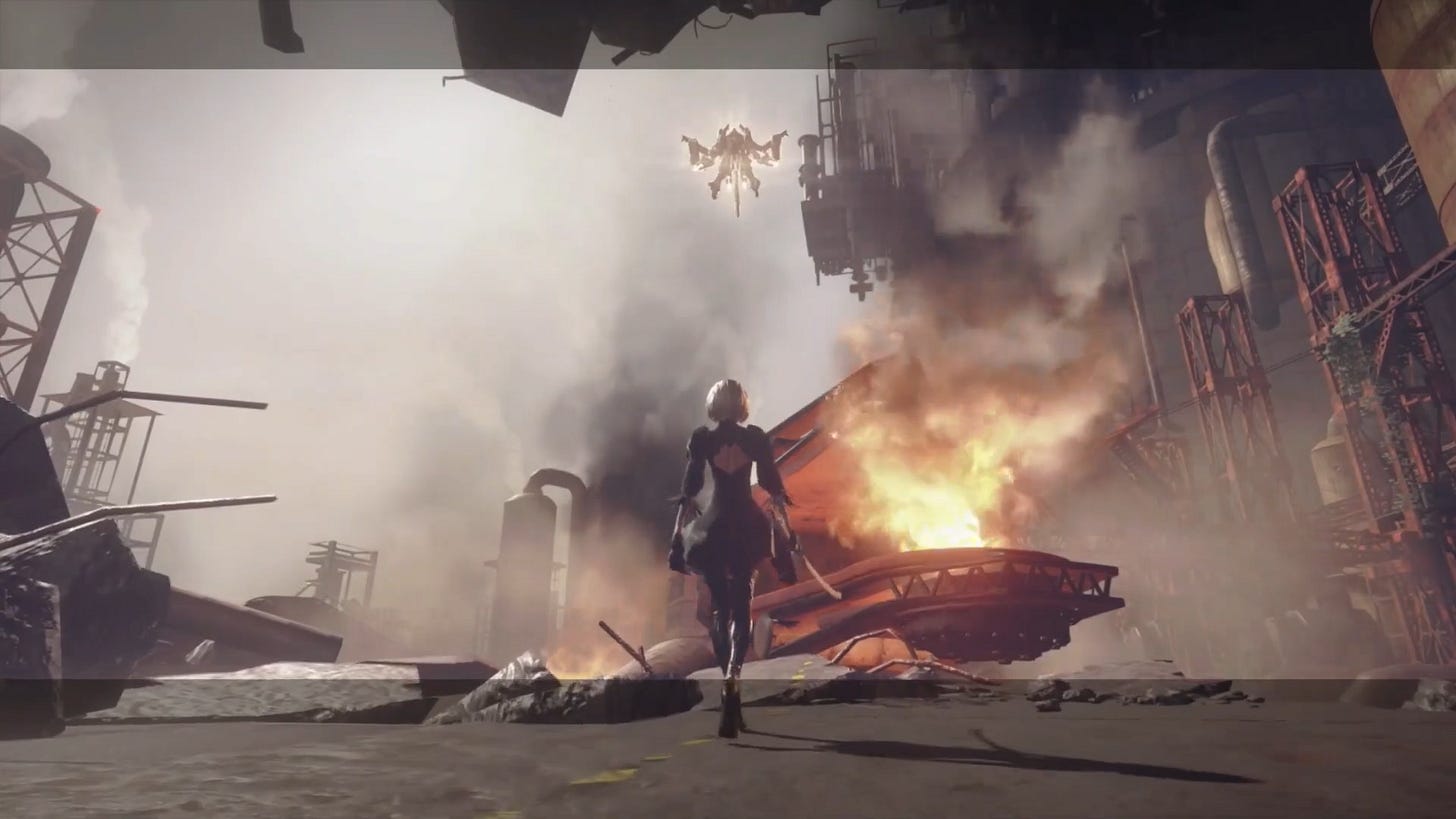
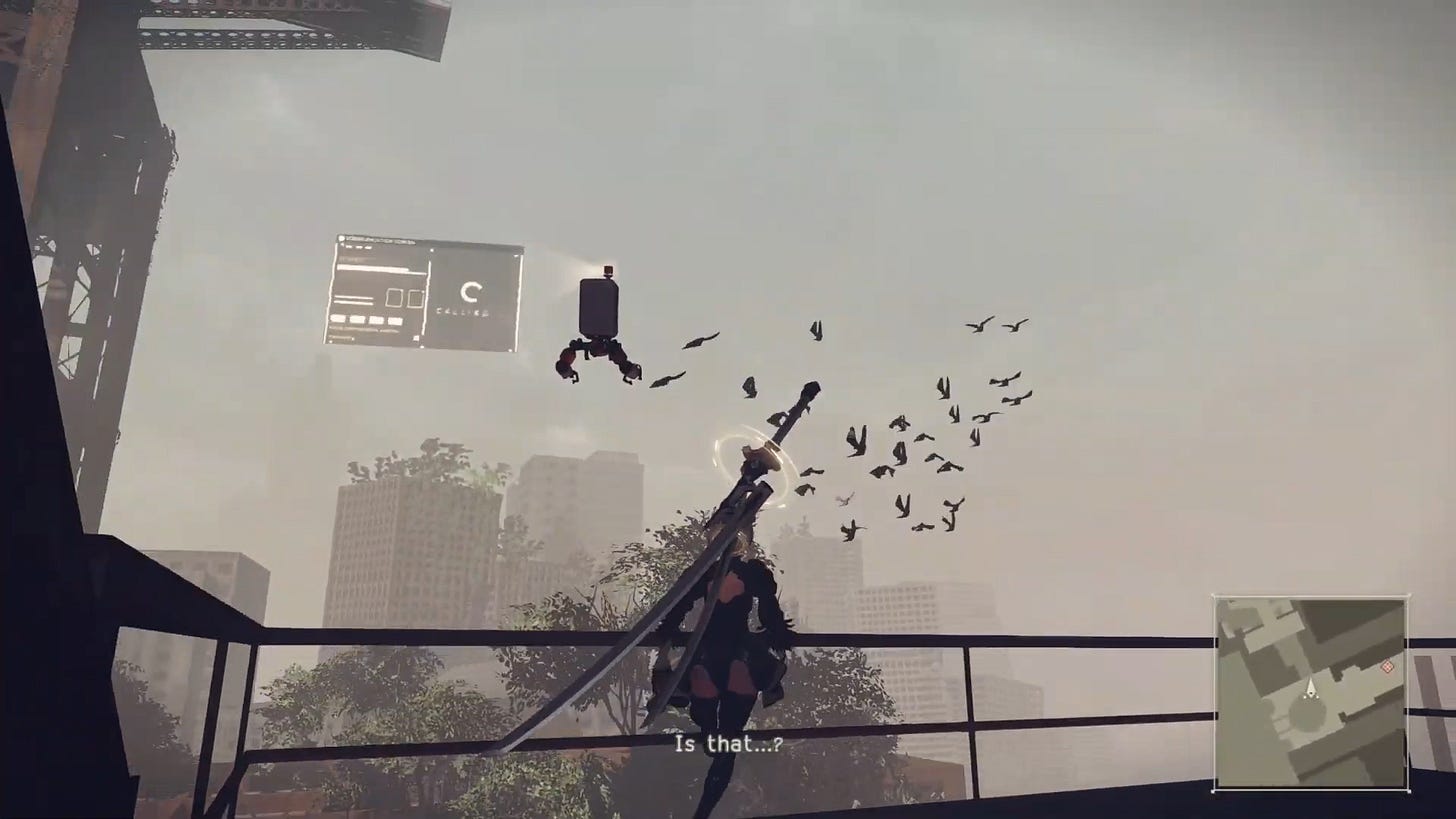
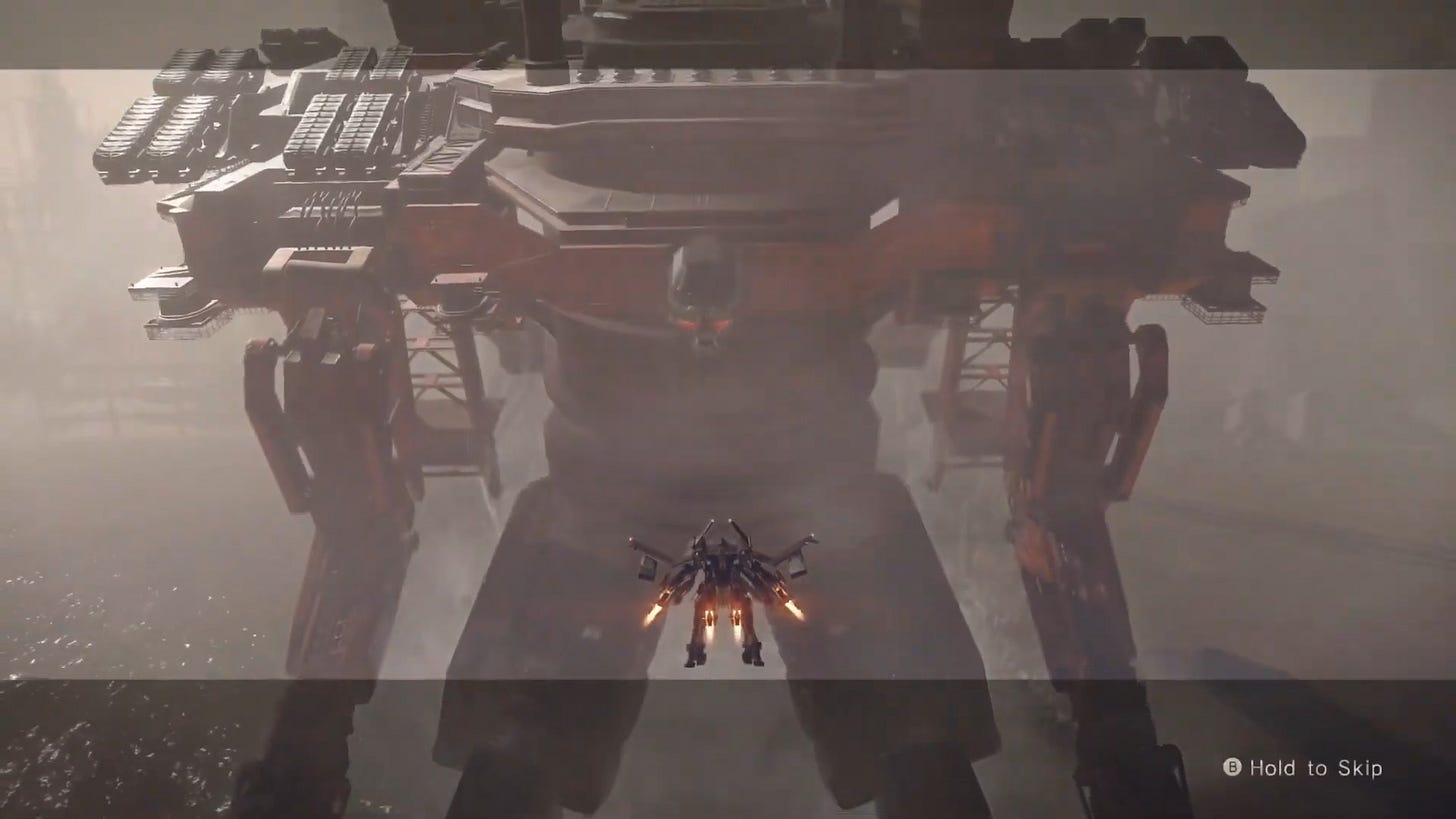
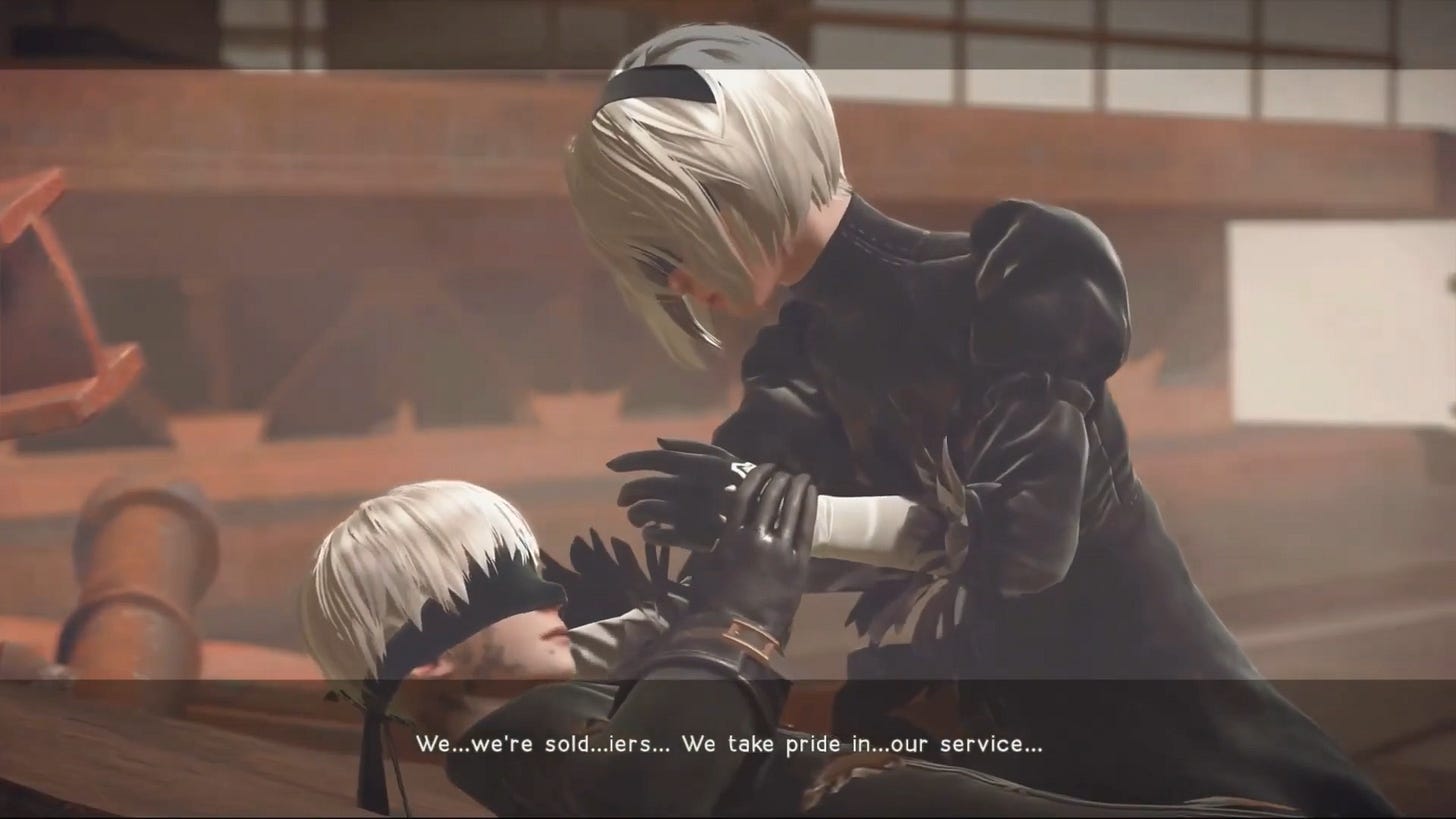
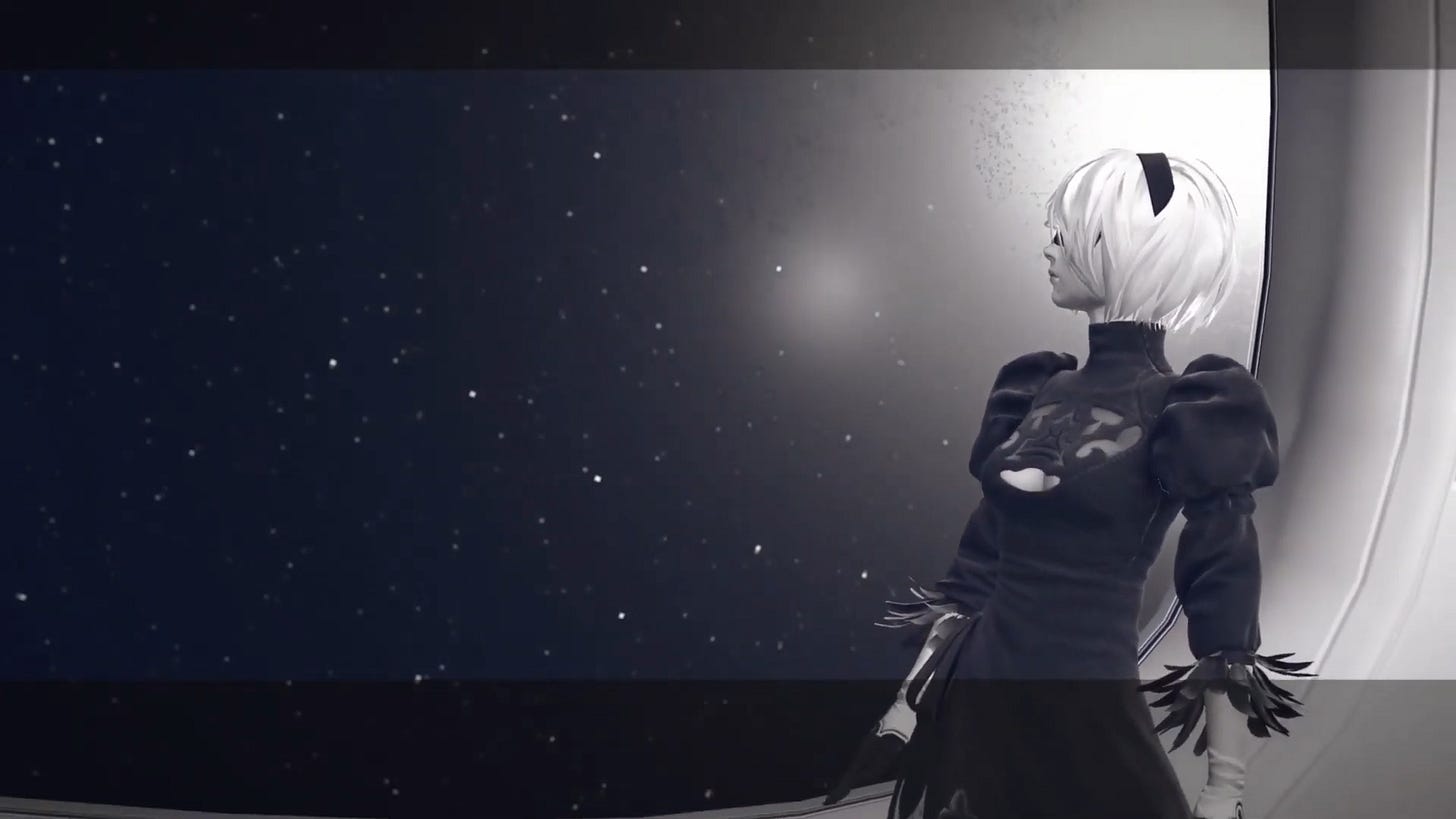
Nier: Automata has been in my backlog for quite a while (I still have the disc sealed in its case, bought on sale), and your article is making me moving it up the list, closer to the ones I’ll be playing soon. Thanks!
Amazing write-up, one thing that I kinda regretted was that I knew already some of the mechanics involved in the game from reading some reviews. This is a game that's much much better enjoyed going in blind.